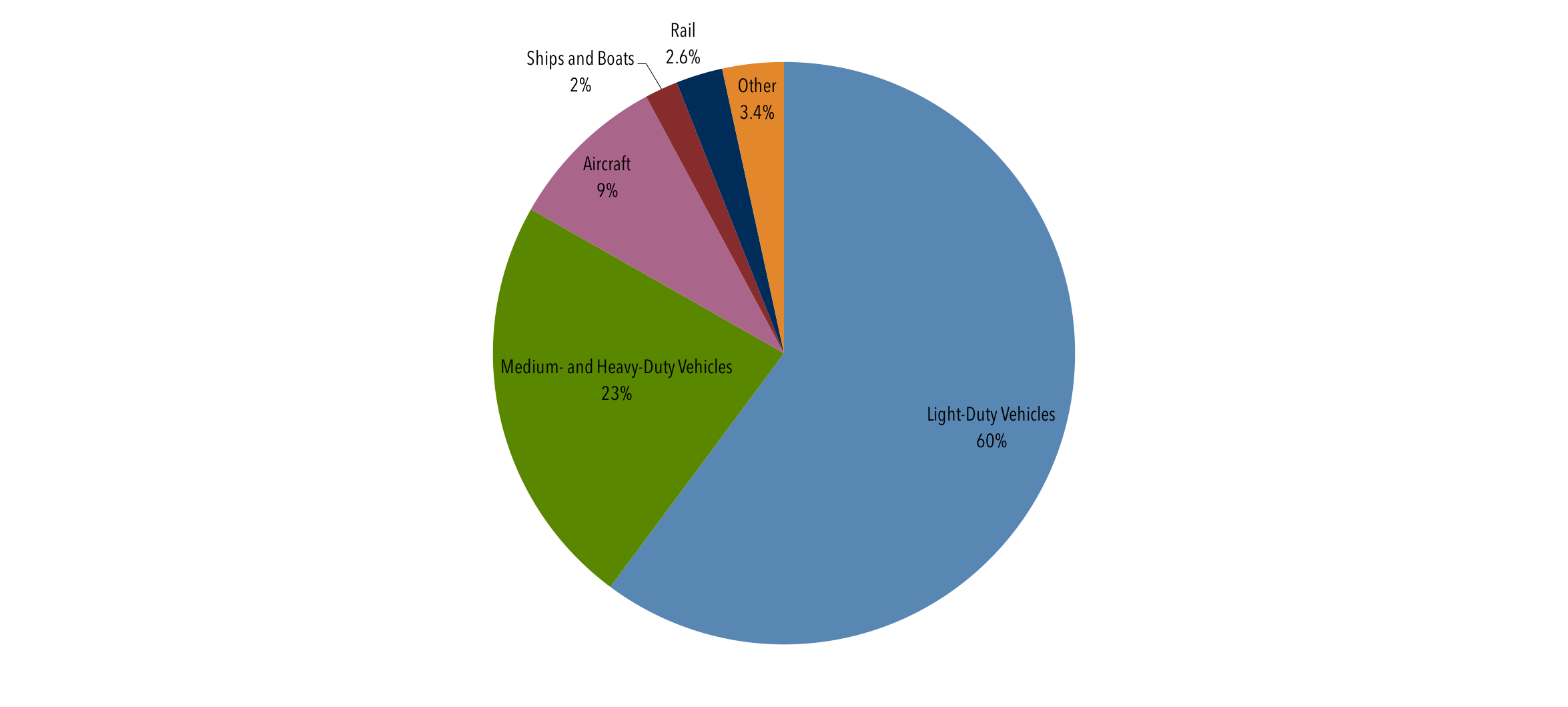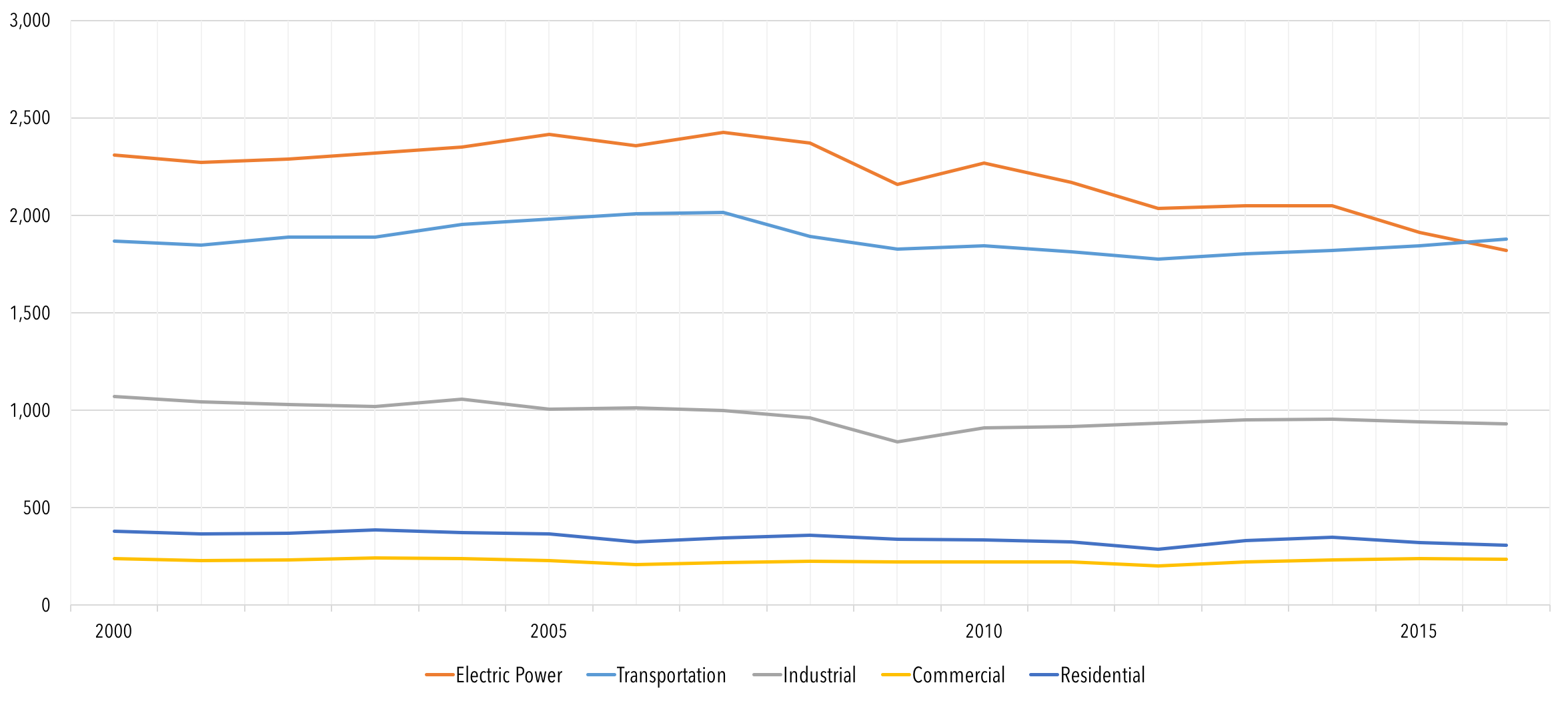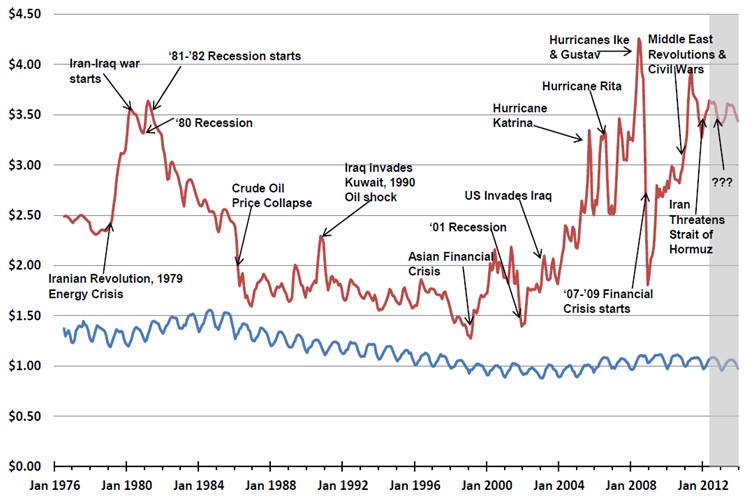PEVs charge by plugging into one of three types of charging stations:
- Level 1 charging uses alternating current and a standard outlet to provide approximately 3 kilowatts of power, or approximately 4-5 miles of charge per hour.
- Level 2 charging also uses alternating current and a high-power circuit to provide approximately 6-7 kilowatts of power, or approximately 12-26 miles of charge per hour depending on the vehicle charging capacity.
- DC fast charging (sometimes known as Level 3) uses direct current to charge vehicles rapidly, typically in less than half an hour at rates of up to 50 kilowatts.
The Electric Vehicle Market
The mass-produced PEV market sprang to life in late 2010, when GM released the plug-in hybrid Chevy Volt and Nissan released the all-electric Leaf. New models have been gradually introduced, though sometimes with limited availability outside California and the Northeast. PEV sales initially grew rapidly, but began to flatten after oil prices began dropping in mid-2014, with year-over-year sales remaining about constant through 2016. The flattening of the PEV adoption curve mimicked the market for fuel-efficient cars overall during times of low oil prices.
The PEV market has started to grow again and shows potential to rapidly expand. Year-over-year sales in the first half of 2017 are 50 percent higher than sales in 2016, and the PEV share of new vehicle sales exceeds 1 percent.
Analysts from the International Energy Agency, OPEC, and several oil companies have substantially increased their estimates of PEV growth in the past year, by up to 500 percent. Bloomberg New Energy Finance and Morgan Stanley both predict that new global PEV sales will outnumber traditionally fueled vehicle sales by 2050, if not sooner.
Reasons for the optimistic outlook include large-scale automaker commitments to PEV manufacturing, governments announcing plans to ban gasoline- and diesel-powered cars, and expectations for lower costs and better performance of PEV batteries.
Benefits of Electric Vehicles
Transportation is the largest single source of U.S. greenhouse gas emissions, with light-duty passenger vehicles accounting for approximately two-thirds of those emissions.
By using efficient electric motors and plugging into a grid using more renewables, PEVs can significantly reduce greenhouse gas emissions. According to an analysis by the Union of Concerned Scientists, the average PEV produces greenhouse gas emissions equivalent to a gasoline-powered car that get more than 70 miles per gallon. (The average new car in the United States achieves 25.3 miles per gallon.)
Electrified transportation is expanding beyond light-duty vehicles. Heavy-duty truck engine manufacturer Cummins and PEV manufacturing leader Tesla have developed electric drivetrains for tractor trucks. Thousands of BEV transit buses have been deployed around the world. Other heavy-duty PEVs are being tested and developed, from school buses to port and mining equipment.
Electrification also benefits local populations by reducing tailpipe emissions (criteria air pollutants produced by gasoline- and diesel-powered engines) that can harm the heart and lung health of people living near roads.
The electricity that powers PEVs is produced domestically and is inexpensive when compared to gasoline and diesel. The transportation system and U.S. dependence on oil are fundamentally intertwined. In 2016, 97 percent of delivered energy to the U.S. transportation sector was from petroleum. Reducing reliance on oil, and particularly foreign oil, creates a more stable market because electric prices are much less volatile than oil prices (see chart below compiled by research from the Edison Electric Institute). Moreover, the efficiency of electric motors makes PEVs more affordable to operate. According to research by Idaho National Laboratory, the operating cost of a mile traveled in a PEV can be 3-5 times less than a mile powered by gasoline.




